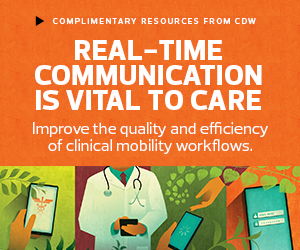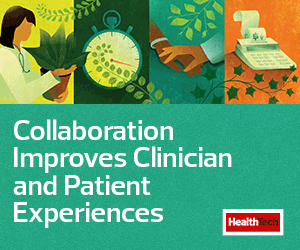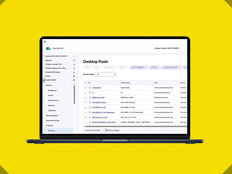1. Should CC&C Support Shared Devices or Bring-Your-Own-Device Policies?
The short answer is yes, to both, Sullivan says.
On one hand, shared devices are the better long-term option, as they are easier to manage, secure and scale. Though CC&C has its roots in secure text messaging and mobile calling for nurses in acute-care settings, it’s now increasingly used across healthcare organizations to share data.
“It has evolved into an enterprisewide platform that enables all departments — now including pharmacy, food service and physical therapy — to communicate and collaborate,” Sullivan says. “That morphs into a need to support the Internet of Things and the cloud.”
At the same time, there will always be situations where certain users need their own devices, such as physicians who may work in several facilities over the course of a shift.
“They’re not going to be tethered to an enterprise device when they are a free-agent caregiver,” Sullivan says.
LEARN MORE: Find out 3 tips to integrate EHRs with CC&C tools.
2. Should CC&C Center on iOS or Android Devices?
This is an important consideration, as CC&C strategy flows from the choice of mobile operating system.
Each OS has advantages and drawbacks, Sullivan says. Since iOS is a closed environment — with rigid requirements and limits on customization — interoperability and scalability can be a challenge. However, iOS apps have custom-built configurations that lend themselves to better security.
Android is an open-source operating system, and therefore more supportive of open application programming interfaces that enable apps to talk to each other. But the Android device market is heavily fragmented, so it’s hard to develop apps that work well across many types of devices.
READ MORE: Learn how CC&C tools support healthcare’s quadruple aim.
3. How Do You Prepare the Hospital Network for CC&C?
Within hospital walls, connectivity is the main concern. Reliable Wi-Fi can be a struggle for older buildings, and dead spots near imaging machines and in elevators don’t help, Sullivan says. Adding IoT devices to monitor patients or RFID to track the whereabouts of expensive equipment also adds to network demand.
Ideally, networks should be segmented, with CC&C platforms given high-speed priority due to their demand for low latency and heavy volume.
Advanced CC&C platforms will support use cases outside the hospital, whether in clinics or in patient-centered medical homes. “That’s a whole different environment,” Sullivan says. Here, the best option is deployment of secure access service edge technology with a wide area network, security controls on the CC&C devices, and support for 4G and 5G networks.
Click the banner below to learn how a clinical mobility workshop can improve care.













